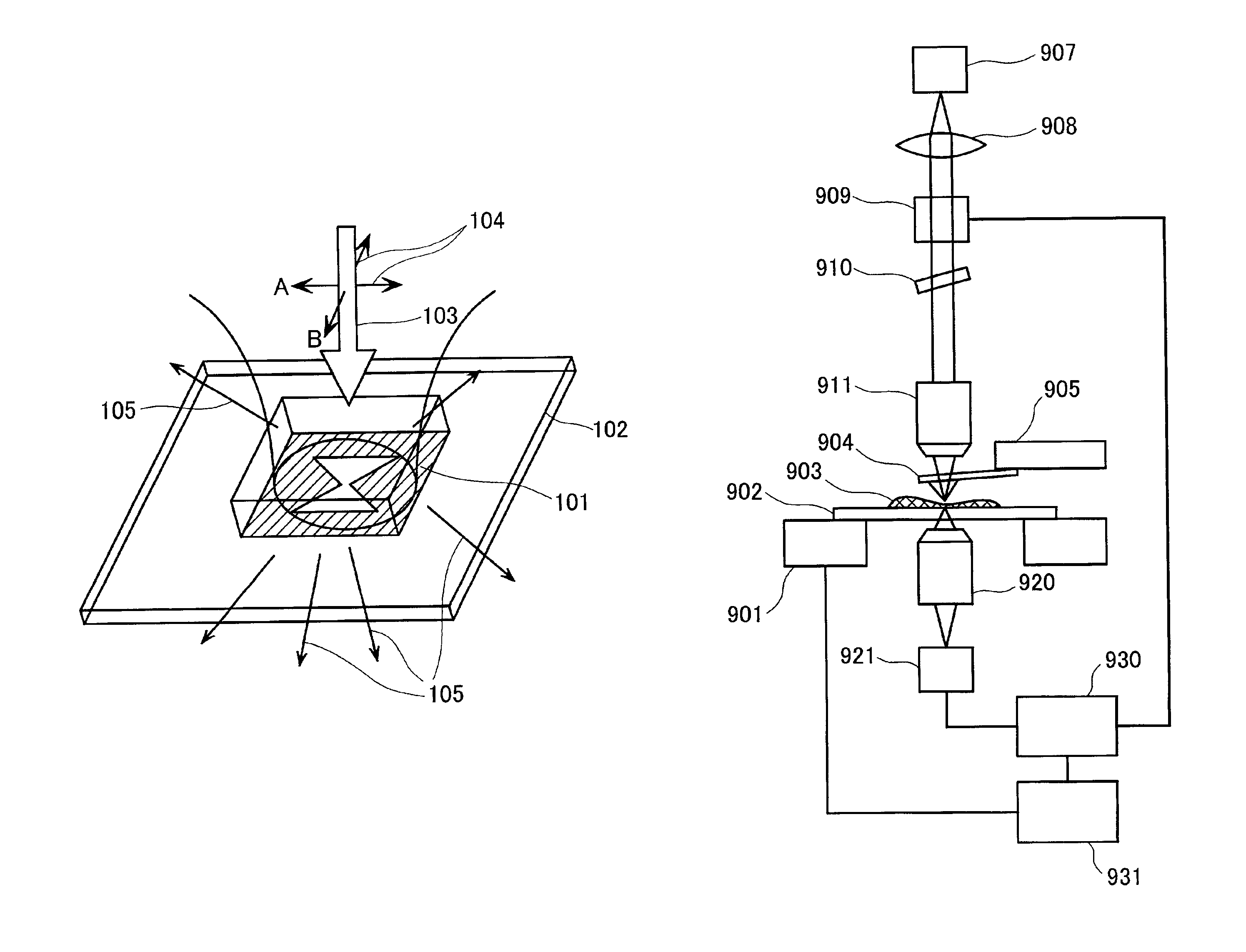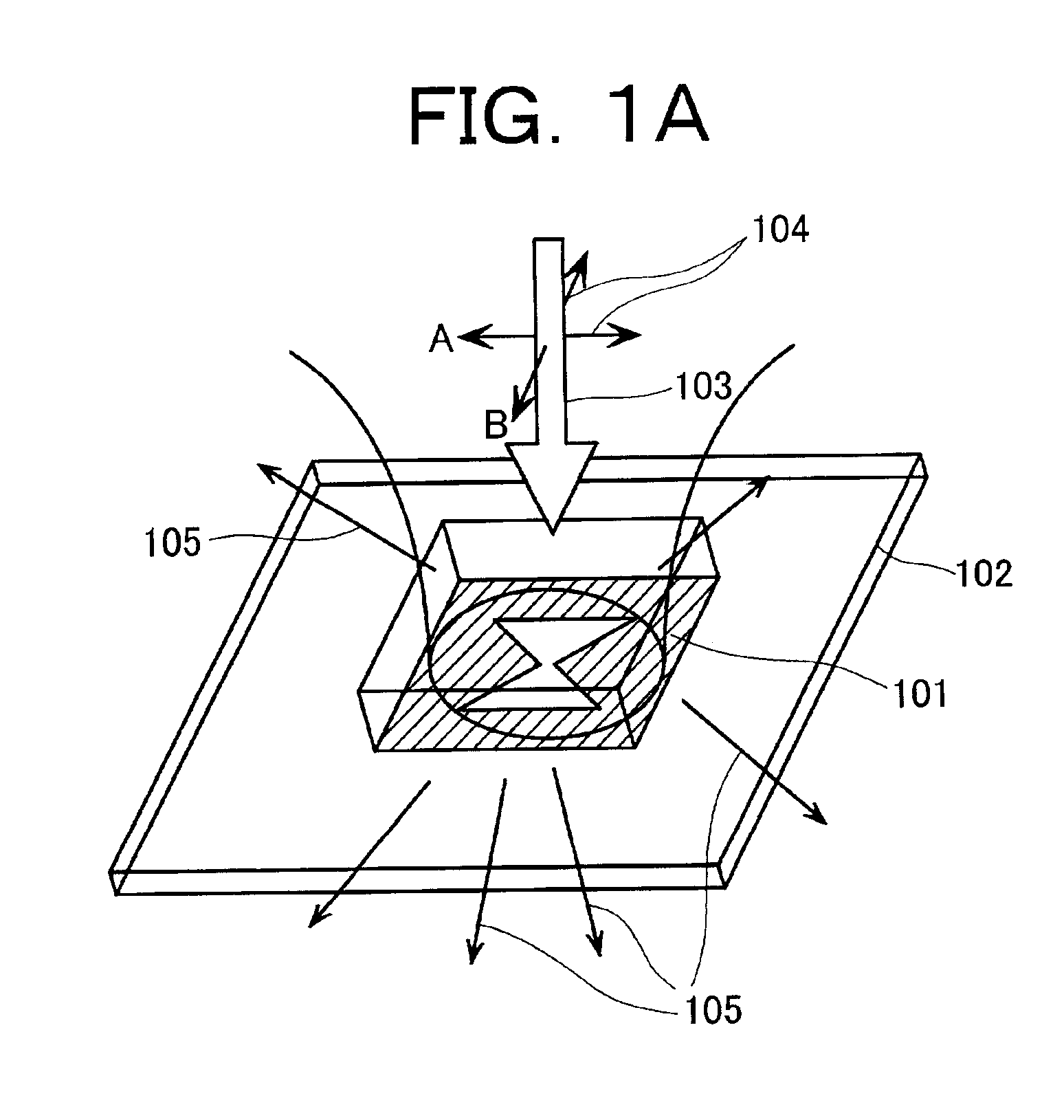Optical apparatuses using the near-field light
a technology of optical apparatus and nearfield light, which is applied in the direction of material analysis using wave/particle radiation, instruments, nuclear engineering, etc., can solve the problems of low level of efficiency, low generation efficiency of probes, and decrease in the s/n (signal-to-noise) ratio of detected signals, so as to achieve excellent s/n ratio and sacrifice spatial resolution
- Summary
- Abstract
- Description
- Claims
- Application Information
AI Technical Summary
Benefits of technology
Problems solved by technology
Method used
Image
Examples
Embodiment Construction
[0040]Hereafter, various embodiments will be described with reference to the drawings.
[0041]The near-field light probes used in accordance with the present invention are roughly divided into those in a planar shape and those in the shape of a pyramid or a cone. When the sample has excellent planarity, such as a medium for optical recording and a semiconductor wafer, it is appropriate and effective to use a planer probe. In an optical recording / reproduction device, a planar head is used as well as a planar probe. In the case, as in the multi-purpose microscopic apparatuses, where inaccessibility of the near-field light to the sample due to unevenness of the sample presents a problem, the probe is formed into a subulate shape (for example, the shape of a multiangular pyramid shape or the shape of a cone) and scanning is conducted with the tip thereof tracing along a shape of the sample.
[0042]First, the planar probe and optical recording / reproduction device that uses it will be describ...
PUM
 Login to View More
Login to View More Abstract
Description
Claims
Application Information
 Login to View More
Login to View More - R&D
- Intellectual Property
- Life Sciences
- Materials
- Tech Scout
- Unparalleled Data Quality
- Higher Quality Content
- 60% Fewer Hallucinations
Browse by: Latest US Patents, China's latest patents, Technical Efficacy Thesaurus, Application Domain, Technology Topic, Popular Technical Reports.
© 2025 PatSnap. All rights reserved.Legal|Privacy policy|Modern Slavery Act Transparency Statement|Sitemap|About US| Contact US: help@patsnap.com



